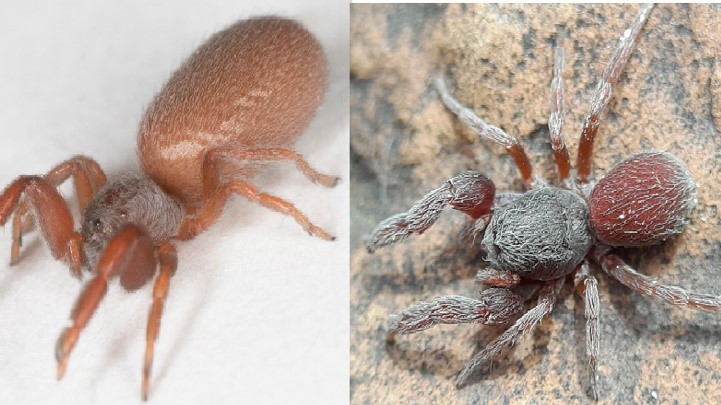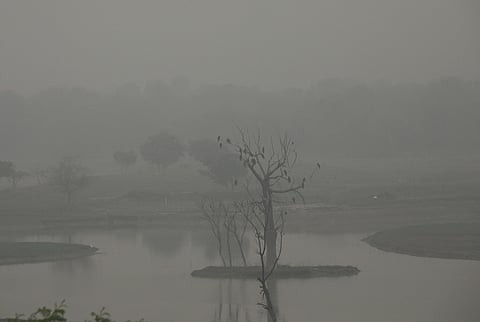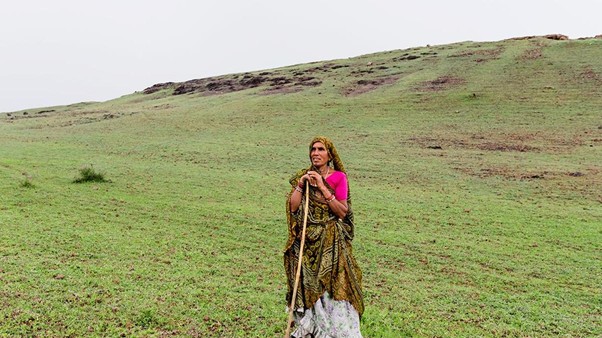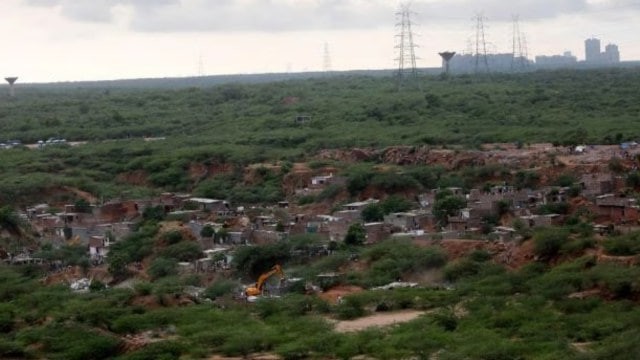Description

Disclaimer: Copyright infringement not intended.
Context
- In a new discovery, Indian arachnologists have found two new species of spider - Palpimanus Godawan and Palpimanus Maldhok - in the conservation sites of the Rajasthan Desert National Park and Solapur district in Maharashtra.
Details
- Researchers said that the habitats of the critically endangered Great Indian Bustard (GIB) played a crucial role in creating an ecosystem for the survival of the two spider species that belong to the Palpimanidae
- “Godawan” and “Maldhok” species of spider aimed to draw attention to the urgent need for the preservation of these vital habitats.
- If the GIB were not there, the habitat would not have been protected, and these spiders would not have survived.
- The critically endangered birds are crucial in preserving the delicate balance of their ecosystems, and every species, including the recently discovered spiders.
- Conservationists have urged for a united endeavor to safeguard frequently neglected species that play a crucial role in maintaining the wellbeing and adaptability of ecosystems

Desert National Park
- Desert National Park is a national park situated in the Indian state of Rajasthan, near the towns of Jaisalmer and Barmer.
- The Desert National Park is an excellent example of the ecosystem of the Thar Desert.
- Sand dunes form around 44% of the Park.
- The major landform consists of craggy rocks and compact salt lake bottoms, intermedial areas and fixed dunes.
- The park was gazetted in 1980.
- Despite a fragile ecosystem, there is an abundance of birdlife.
- The region is a haven for migratory and resident birds of the desert.
- Many eagles, harriers, falcons, buzzards, kestrel and vultures are spotted here.
- Short-toed eagles, tawny eagles, spotted eagles, laggar falcons and kestrels are the most common among these.
- The Chinkara or Indian Gazelle (Gazella bennettii) is a common antelope of this region.
- The greatest attraction of the park is a bird called the Great Indian Bustard, a critically endangered species found only in India.
- The vegetation is sparse, and patches of swan grass and aak shrub (Calotropis) can be seen.
- Mammals: desert fox, Bengal fox, desert cat, wolf, hedgehog, chinkara.
- Reptiles: spiny-tailed lizard, monitor lizard, saw-scaled viper, Russell's viper, common krait.
- Avifauna: sandgrouse, Indian bustard, partridges, bee-eaters, larks and shrikes are year-round residents, while demoiselle crane and houbara bustard arrive in winter. Raptors include tawny and steppe eagles, long-legged and honey buzzards, and falcons.
- Flora: Habitats that are found in the park include open grassland, thorny bushes, and dunes.
- The Desert National Park has a collection of fossils of animals and plants which are 180 million years old.
- Some fossils of dinosaurs which are 60 million years old have been found in the area.
- Desert National Park also has fossils from the Jurassic Period.

READ ABOUT THE GREAT INDIAN BUSTARD:
https://www.iasgyan.in/daily-current-affairs/great-indian-bustard-23#:~:text=Great%20Indian%20Bustard%20(GIB)%3A,GIB%20population%20in%20the%20wild.
https://www.iasgyan.in/daily-current-affairs/great-indian-bustard-2
|
PRACTICE QUESTION
Q. Recently, the newly discovered species Palpimanus Godawan was in the news. What is it?
1.Spider
2.Butterflies
3.Eel
4.Catfish
Answer: 1
|
https://sputniknews.in/20230912/two-new-species-of-spider-discovered-named-after-great-indian-bustard-4210704.html












